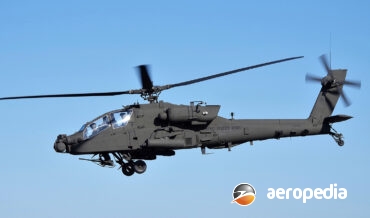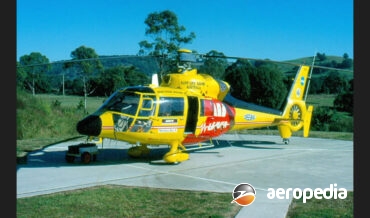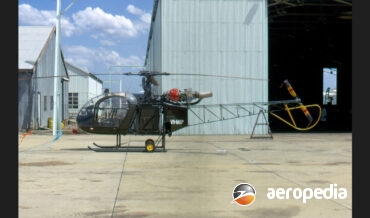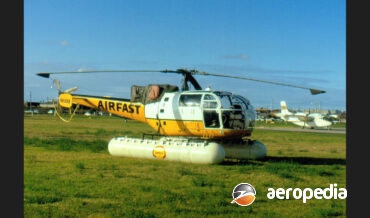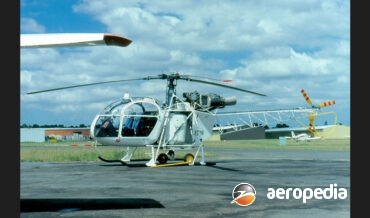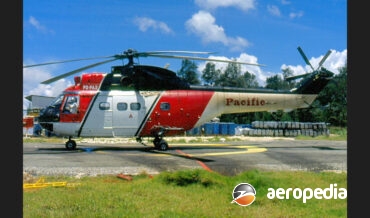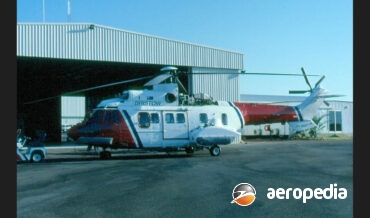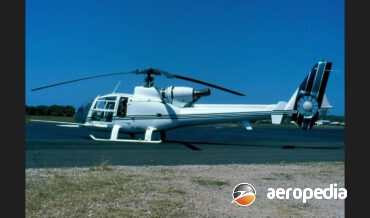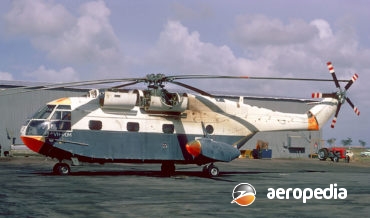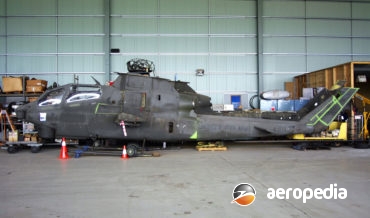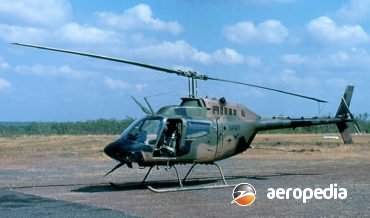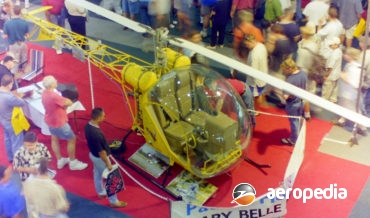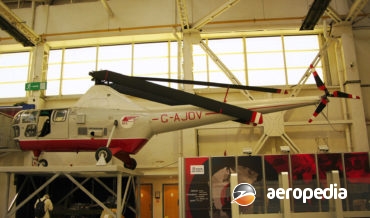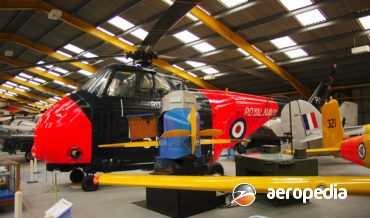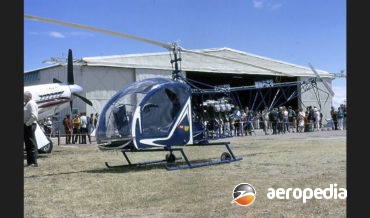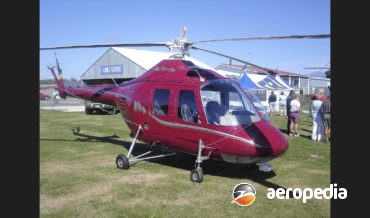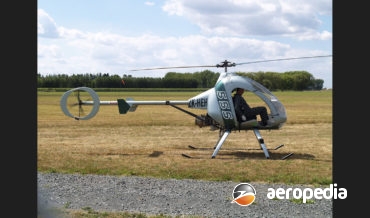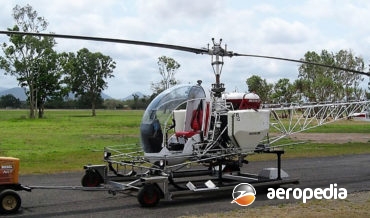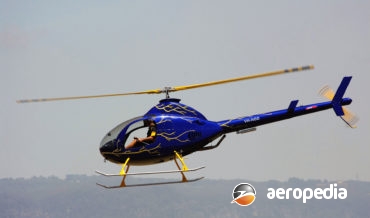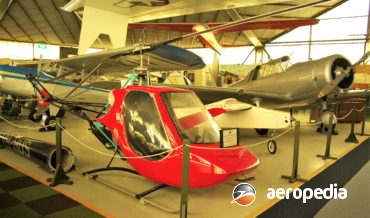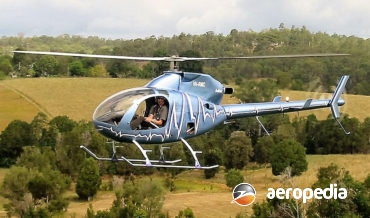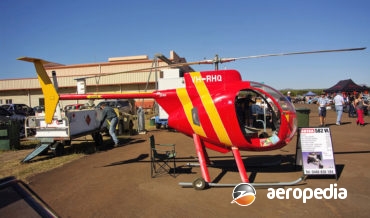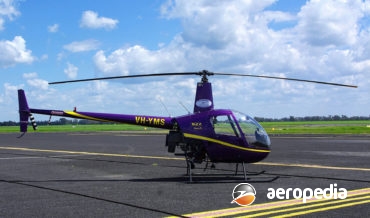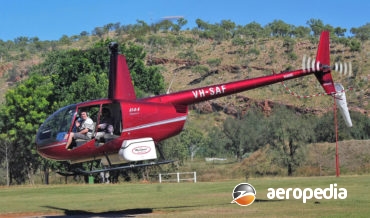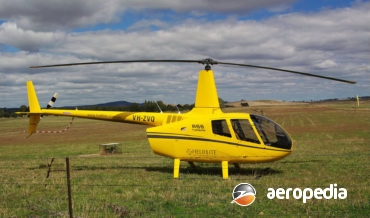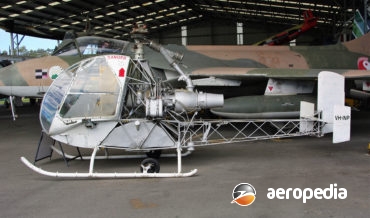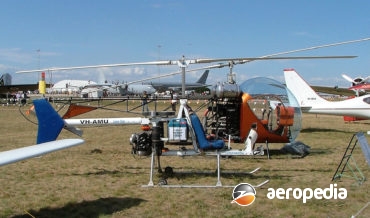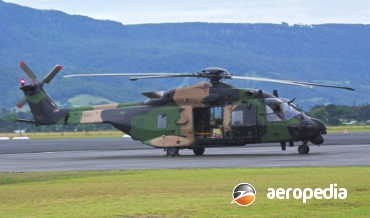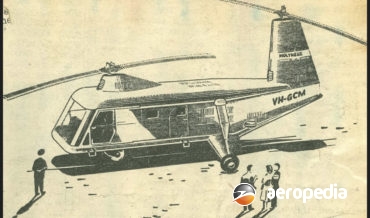All Contents
Contents
On 15 January 2021 to meet Project Land Requirement 4503 the Australian Government ordered 29 examples of the Boeing AH-64E Apache Guardian to replace the the troublesome Eurocopter Tiger attack helicopter with the Australian Army.
David C. Eyre
- March 2, 2021
Designed as a replacement for the widely used Alouette series of general- purpose helicopters, the Dauphin was initially produced in two versions; the single-engine model fitted with a Turbomeca Astazou turboshaft of 783-kw (1,050-shp); and the twin-engine model powered by two Arriel turboshafts.
David C. Eyre
- June 26, 2020
Designed by the French company, Sud Aviation, which later became part of Aerospatiale, the national aerospace company, the Alouette II was one of the early success stories in the development, production and marketing of helicopters in France.
David C. Eyre
- June 26, 2020
The Alouette III was first placed in production by Sud Aviation in 1961 as a general-purpose helicopter for both civil and military applications.
David C. Eyre
- June 26, 2020
The Lama was developed by Aerospatiale in France mainly to meet the requirements of the Indian armed forces for a light utility helicopter.
David C. Eyre
- June 26, 2020
The Puma series of helicopters was designed and developed by the National Aerospatiale Company in France in the early 1960s to meet a requirement of the French Army for a medium-lift, twin-engine, helicopter.
David C. Eyre
- June 26, 2020
The AS 332 Super Puma was a development of the SA 330 Puma, which flew for the first time in April 1965.
David C. Eyre
- June 26, 2020
Developed as a general-purpose, light-weight helicopter for military and civil use, the Gazelle was produced in large quantities both by Aerospatiale in France and Westland in the United Kingdom, as well as being assembled in Yugoslavia.
David C. Eyre
- June 26, 2020
Stanley Hill Jr designed the Model 360 helicopter and offered it for commercial sale in 1948. Subsequently the designation Hiller 360 was dropped in favour of UH-12, and later models were known simply as the 12C, 12E, etc.
David C. Eyre
- August 24, 2019
In 1955 the aircraft division of the Hughes Tool Co designed and developed a light helicopter known as the Model 269.
David C. Eyre
- August 24, 2019
The Hughes 500 series was chosen for development for the US Army in 1961 as the OH-6A, and five prototypes were ordered for evaluation in competition with the Bell OH-4A and the Hiller OH-5A.
David C. Eyre
- August 24, 2019
Production of the Scout/Wasp series of light helicopters was commenced in 1957 as a private venture by the Saunders-Roe Company.
David C. Eyre
- May 19, 2019
The Westland Wessex was a British development of the Sikorsky S-58, with a turboshaft engine replacing the original piston-engine radial.
David C. Eyre
- May 19, 2019
The Super Frelon originated from two prototypes of the SA 3200 Frelon [Hornet], the first of which was flown for the first time on 10 June 1959.
David C. Eyre
- May 19, 2019
In June 1955 the Bell Helicopter Company won a US Army contest to design a new utility helicopter.
David C. Eyre
- May 19, 2019
The Bell Model 209 or AH-1 was a redesigned Iroquois with a gunner and pilot in tandem, a chin turret fitted with a 7.62 mm (0.30 in) Minigun, or 40 mm grenade launchers, and with stub wings carrying four weapons pylons.
David C. Eyre
- May 19, 2019
The US Army in 1960 issued a proposal for a light observation helicopter and Bell Helicopter submitted a variant of the Model 206, which became the YHO-4A.
David C. Eyre
- May 19, 2019
In 1959 Continental Copters Inc of Fort Worth, Texas obtained a number of Bell 47G-2 helicopters and proceeded to convert them to operate as single-seat agricultural aircraft and the conversion became known as the El Tomcat, produced over a number of years in some numbers for agricultural work.
David C. Eyre
- May 17, 2019
The Baby Belle first flew in 1990 and has been developed as a scaled down replica of the well known Bell 47 series of helicopters, being of rugged construction and able to fly all-year round.
David C. Eyre
- May 17, 2019
In 1947 Westland Aircraft Co obtained a licence to build the Sikorsky S-51 in the United Kingdom for the British military services, this being a four-seat general purpose helicopter in service with the USAAF.
David C. Eyre
- May 8, 2019
The Whirlwind was a development of the Sikorsky S-55, the prototype HAR-1 (XA862) flying for the first time on 21 August 1953 powered by a 448-kw (600-hp) Pratt & Whitney R-1340-40 radial engine and was later delivered to the Royal Navy.
David C. Eyre
- May 8, 2019
The Wikopter was an experimental helicopter designed and built by Geoffrey Neville Wikner (1904 - 1990) at Trafalgar Heights, Nelson Bay, NSW.
David C. Eyre
- May 8, 2019
The Philicopter did not represent the first venture into the production of a commercial helicopter by an Australian company but it, like the Wikopter and the Moser, built in the 1960s, was one of the first. However none in fact have entered production.
David C. Eyre
- May 8, 2019
The Hummingbird is a kit-built helicopter produced by Vertical Aviation Technologies of Sanford, Florida.
David C. Eyre
- May 8, 2019
New Zealand based Ultrasport Helicopters NZ Ltd of Manaia, Taranaki has developed a turbine variant of the American Sportscopter.
David C. Eyre
- May 8, 2019
In the late 1990s five American Sportscopter light helicopters were imported to New Zealand, one, a Model 496 (ZK-HIY) later in 1999 being rebuilt to U600 specifications; and four Model 600s.
David C. Eyre
- May 8, 2019
The Bell 47G series of helicopters was purchased and operated by the US Army, USAF, US Navy, the British Army and many other forces around the world, the prototype of the series flying for the first time on 8 December 1945.
David C. Eyre
- May 8, 2019
B J Schramm has been involved in the designing and marketing of both ready-to-fly and prefabricated components for light helicopters since the 1960s.
David C. Eyre
- May 8, 2019
The Schramm Aircraft Company was formed in 1958 by B J Schramm to market both ready-to-fly and pre-fabricated components for a single-seat light sporting helicopters.
David C. Eyre
- May 8, 2019
The T-62 is a development by K.I.S.S.Aviation of the kit-built Executive 162 helicopter, which is produced by Rotorway International at Chandler in Arizona, to take a turbine engine, a number of examples being completed in the United States.
David C. Eyre
- May 8, 2019
The Mini 500 single-seat helicopter is one of a new breed of machines aimed at the sporting and farming markets and has been developed by Revolution Helicopter Co of Excelsior Springs in Montana.
David C. Eyre
- May 8, 2019
The R-22 light helicopter was designed by Frank D Robinson. The first of two prototypes, which was flown on 28 August 1975, was the result of six years of development work.
David C. Eyre
- May 8, 2019
In 2015 The Robinson Helicopter Co announced it planned to produce a two-seat variant of the R-44 called the Cadet which would be suitable for a wide variety of utilitarian applications, but mainly aimed at the training market.
David C. Eyre
- May 8, 2019
The R-44 is a four-seat development of the very successful R-22, more than 2,000 examples of which had been delivered when the R-44 entered production in late 1992.
David C. Eyre
- May 8, 2019
The R-66 is a turbine powered helicopter developed in the United States. In March 2007 Frank Robinson announced his company would produced a turbine variant of the R-44, the prototype being shown at the company’s facility fitted with a new lightweight Rolls Royce 300 engine, the aircraft making its debut
David C. Eyre
- May 8, 2019
The Djinn was the first jet driven helicopter in the world, being designed by the Sud-Ouest concern which subsequently became part of Sud Aviation when the French aircraft industry was nationalised.
David C. Eyre
- May 8, 2019
The Lonestar is a single-seat basic utility helicopter of all-metal construction marketed by Star Aviation Inc of New Braunfels in Texas, and is fitted with a 82-kw (110-hp) Hirth engine driving, via a chain, a composite main rotor.
David C. Eyre
- May 8, 2019
The NH-90 has been developed by NH Industries, a consortium set up by France, Germany, Italy and The Netherlands, comprising Eurocopter, Agusta Westland and Stork Fokker Aerospace, to produce a medium sized utility helicopter for the armies and navies of those countries. The design was initiated by Britain, France, Italy
David C. Eyre
- May 8, 2019
The Mosquito series of light helicopters was developed in the United States by Innovator Technologies.
David C. Eyre
- May 8, 2019
Grevor Chilton [known as Bing or George] Molyneux, who was born in 1917 and died in August 2001, was a young aeronautical engineer who held a number of degrees in aeronautical engineering.
David C. Eyre
- May 8, 2019
Recent Comments
Archives
Categories
- No categories
Categories
- No categories
Latest Posts
Newsletter

